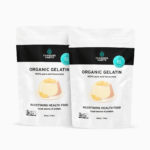You watch what you eat and what you use on your skin, but there is another batch of products you may use every day that could be detrimental to your health. We’re talking cleaning products.
Being mindful of our exposure to harmful chemicals (or ‘counting our chemical calories’) goes beyond what we eat. Just as you may use skincare products without any added nasties, it can be just as important to consider what your household cleaners and detergents may contain.
These products can be a minefield of toxic chemicals, and although you don’t use them on your skin or consume them, you do inhale them. Any contact with these chemicals can create an increase in chemical calories and thus an increase in ill health and obesity and a decrease in energy.
Harmful Ingredients to Look Out For
While this is by no means an exhaustive list, here are some of the harmful chemicals that may be present in the cleaning products you use:
Phthalates
Phthalates are hormone disruptors (or xenoestrogens – read more about those here) and can be found in some household detergents. These are chemicals that block hormone receptor sites of men and women and have been suspected to cause erectile dysfunction and difficulty, breast cancer, infertility for both men and women, endometriosis, polycystic ovaries and more.
Perchloroethylene or “PERC”
Found in some carpet cleaners and stain removers, Perchloroethylene or “PERC” has been classified by the International Agency for Research on Cancer as a potential human carcinogen. It may also damage the liver, kidneys and central nervous system if you are exposed to it over a long period, and it may also affect the development of a fetus.
Chlorine
Chlorine is commonly found in household bleach. It’s also used to disinfect tap water in some areas. Chlorine can irritate the airways, cause breathing difficulties and eye and skin irritation.
Quaternary Ammonium Compounds
Found in disinfectants and fabric softeners among other products, Quaternary Ammonium Compounds, or “QUATS”, can irritate the skin and the respiratory mucous membranes and can also act as a hormone disruptor.
Ammonia
Commonly found in glass cleaning products because it evaporates quickly so it minimizes streaking, Ammonia has a very strong smell. If you have high level exposure to ammonia, it can irritate your throat, lungs, skin and eyes. Exposure to high levels of Ammonia may be irritating to a person’s skin, eyes, throat, and lungs and cause coughing and burns.
Sodium Hydroxide
Sodium Hydroxide, or lye, can cause severe burns to the skin, eyes and mucous membranes. If you inhale it, you can get a sore throat that you won’t be able to shift for days. You will probably find it listed in the ingredients of oven cleaners and drain unblockers.
What Should You Do Next?
Check the labels on your cleaning products. If these ingredients are included, or a poison caution is noted anywhere on the label, throw it out and look for non-poisonous products.
Changing Habits have a range of cleaning products designed to use the cleaning power of nature, with a combination of herbal extracts and essential oils. They are all free from harsh chemicals and synthetic fragrances. Our range includes:
- Glass, Window and Mirror Sparkle
- Grapefruit Laundry Liquid
- Toilet Cleaning Sparkle
- Bathroom Brilliance Gel
- Tile and Floor Cleaner
- Multipurpose Spray
- Dishwasher Liquid
Check out www.changinghabits.com.au/shop/ for more details.
Happy (and safe) cleaning!
References
- https://www.atsdr.cdc.gov/csem/csem.asp?csem=14&po=10
- https://toxtown.nlm.nih.gov/text_version/chemicals.php?id=22
- https://www.health.ny.gov/environmental/emergency/chemical_terrorism/chlorine_general.htm
- https://www.ncbi.nlm.nih.gov/pubmed/25812396
- http://thechalkboardmag.com/toxic-tuesday-quaternary-ammonium-compounds-quats
- https://www.chemicalsafetyfacts.org/ammonia/
- https://experiencelife.com/article/8-hidden-toxins-whats-lurking-in-your-cleaning-products/









0 Comments